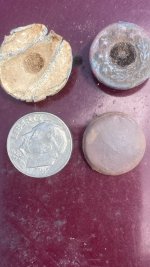sflsweeper
Greenie
- Feb 25, 2010
- 10
- 1
Has anyone detected cozumel? I am going soon and do not know if it is ok or any good. I am thinking it may be a great experience but just wondering if any of you have gone there detecting yet.
Amazon Forum Fav 👍
Upvote
0




